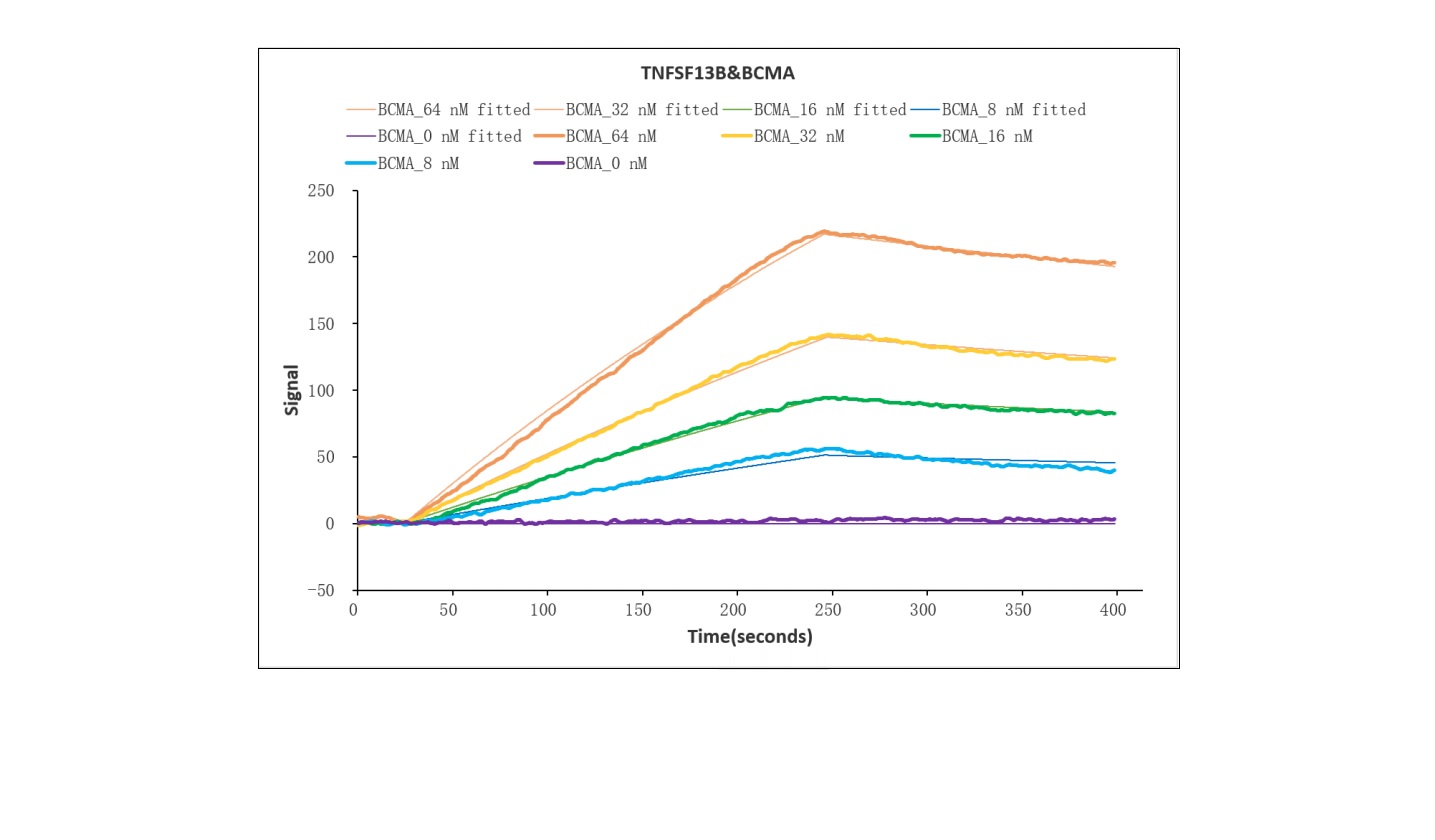Human TNFSF14 DNA fragment encoding the amino acid Asp74-Val240, with an N-terminal hFc-Myc-tag as well as an N-terminal linker, was expressed in mammalian cells. The obtained product is the recombinant human TNFSF14 protein. Its purity is measured by SDS-PAGE and reaches up to 88%. This TNFSF14 protein has an apparent molecular mass of 50 kDa on SDS-PAGE while its predicted mass is 46.7 kDa. It contains less than 1.0 EU/ug endotoxin determined by the LAL method. And its bioactivity was validated in the functional ELISA by measuring its binding ability with the TNFRSF14. In-stock TNFSF14 protein is offered now.
TNFSF14, also called LIGHT or HVEM, is a type II membrane protein mainly expressed on activated T cells, NK cells, and immature dendritic cells (DCs). TNFSF14 signaling participates in lymphoid organ development and organization, as well as both innate and adaptive immune responses. It also exerts dual effects in lymphocytes and tumor cells, whether pro-survival or pro-apoptosis of TNFSF14 is determined by the cellular context.









